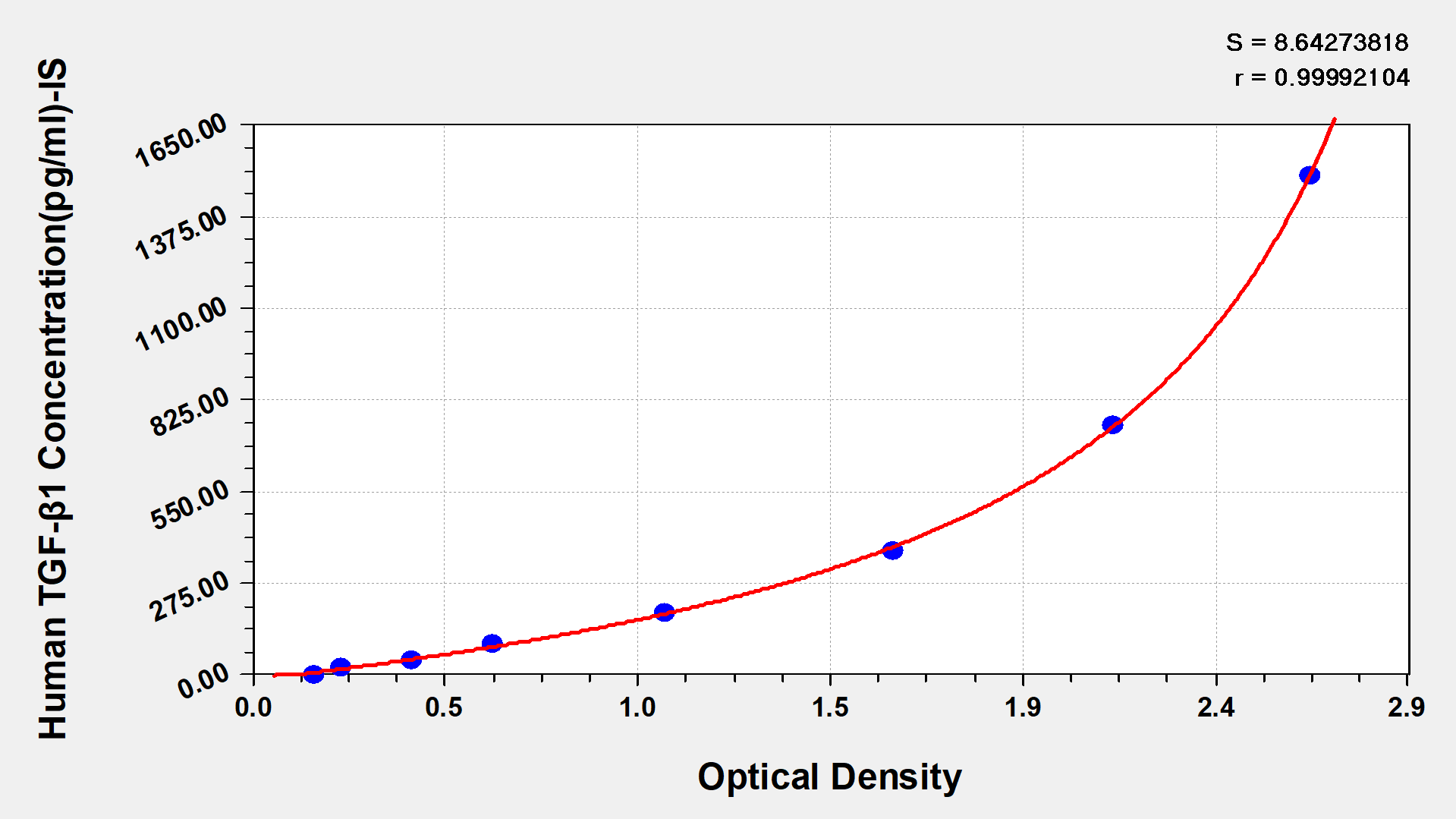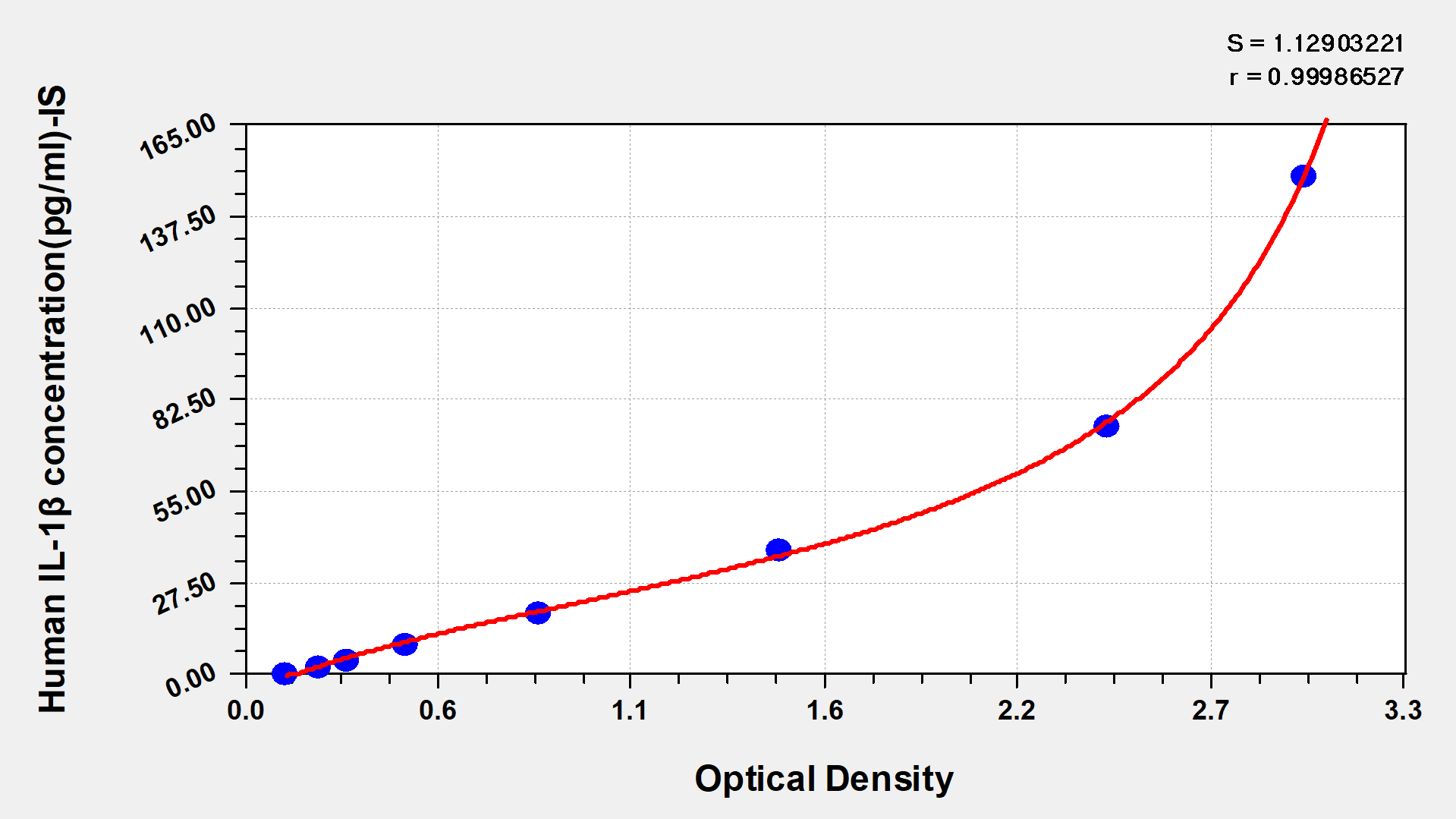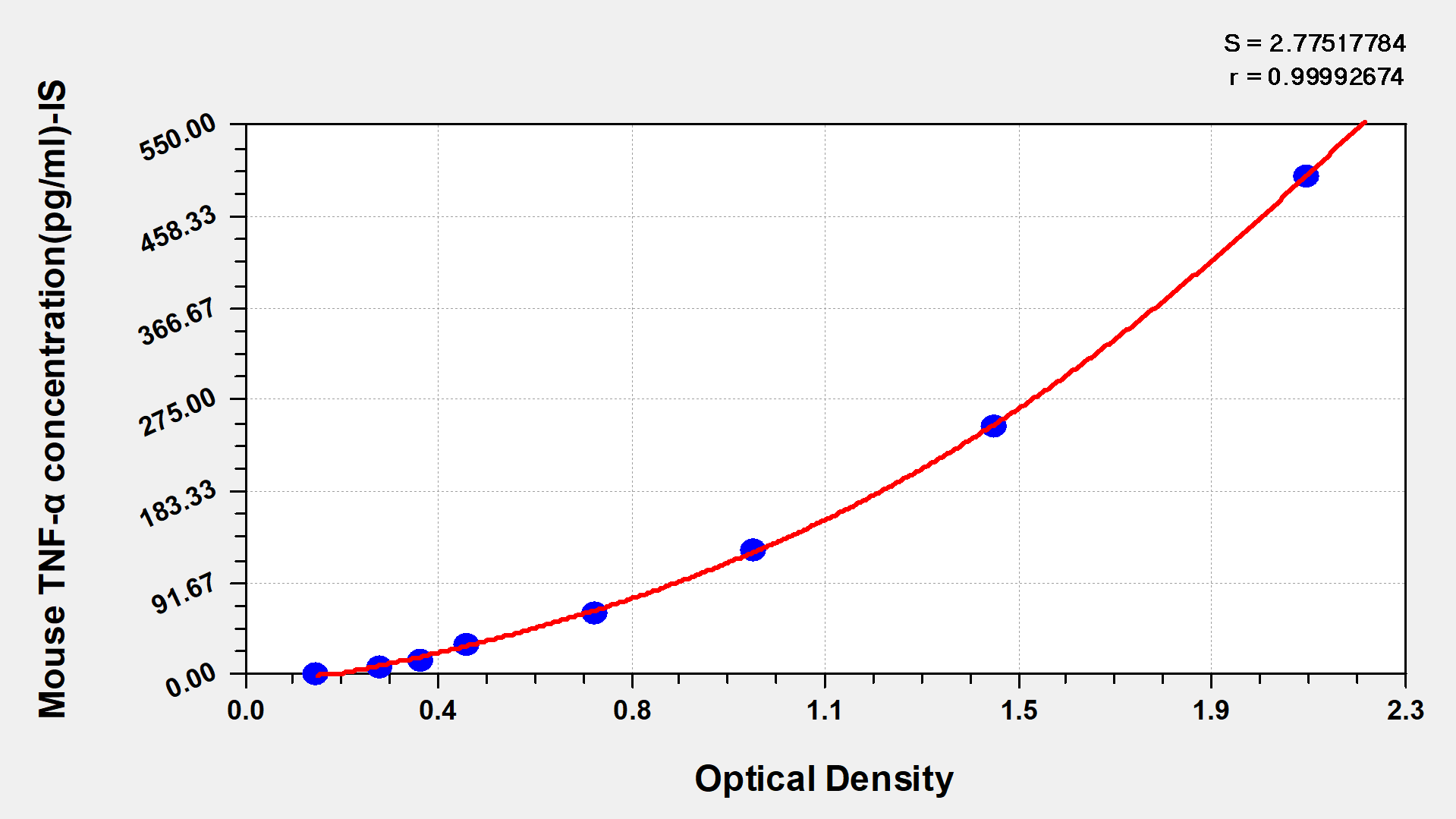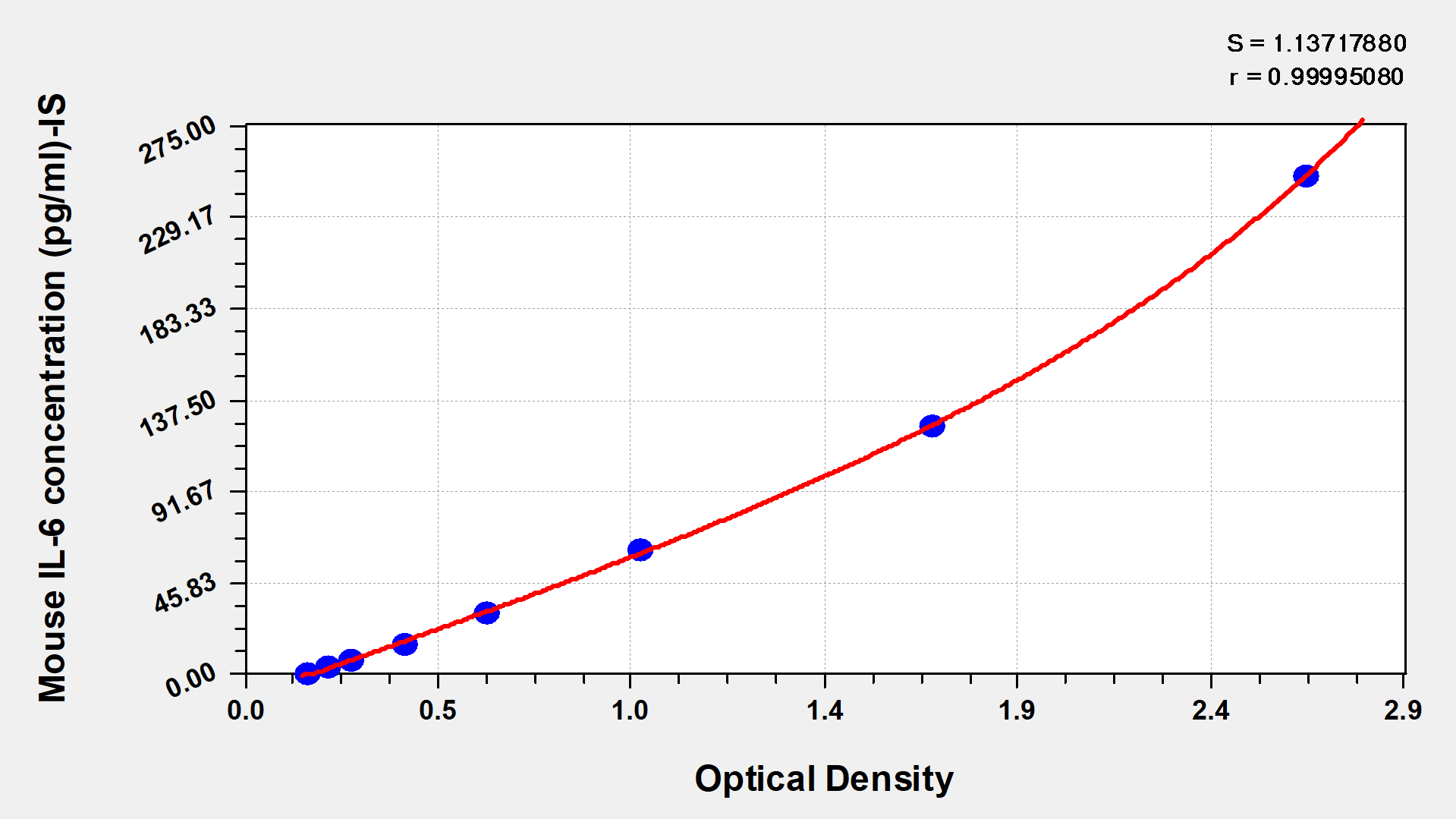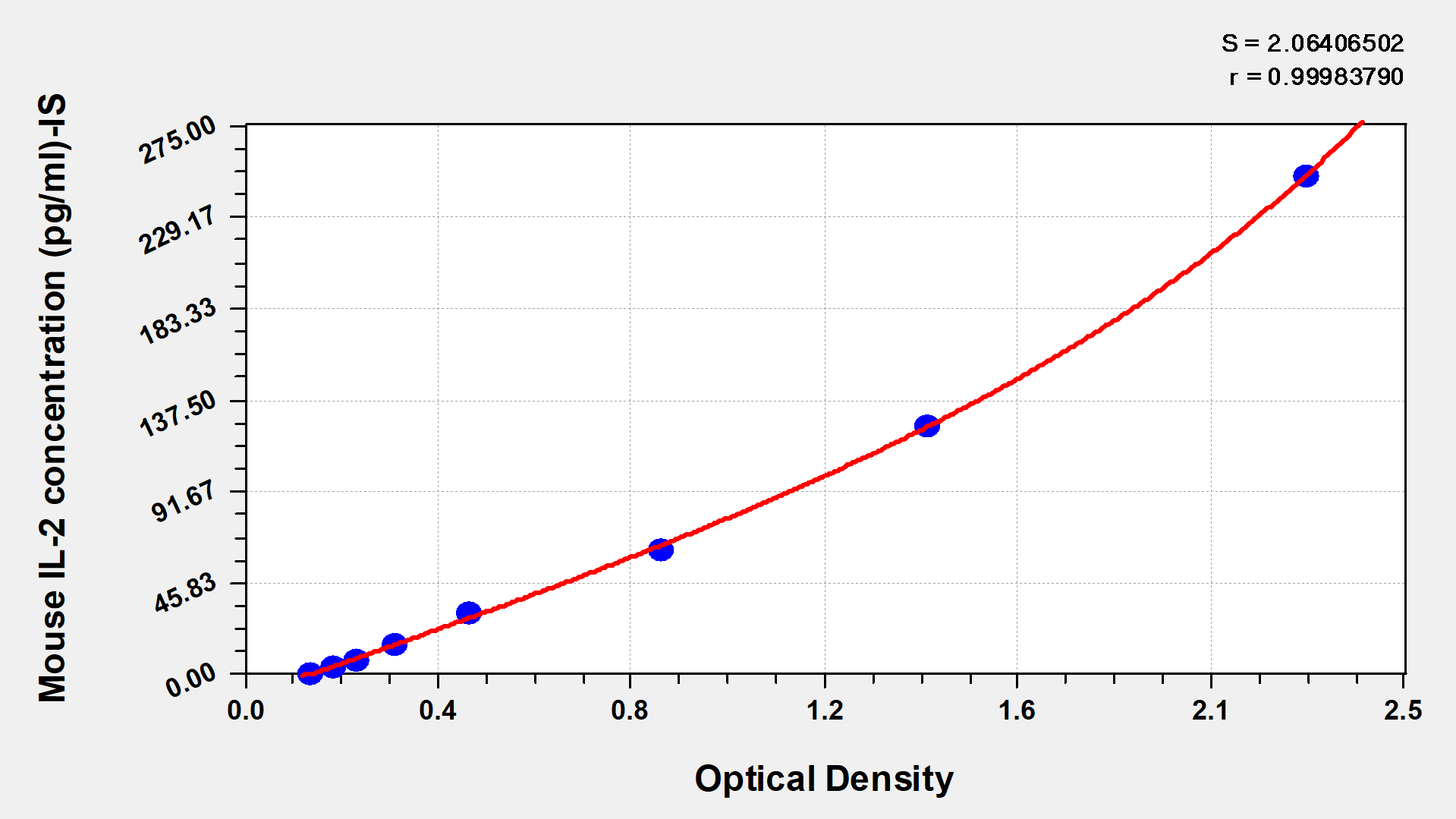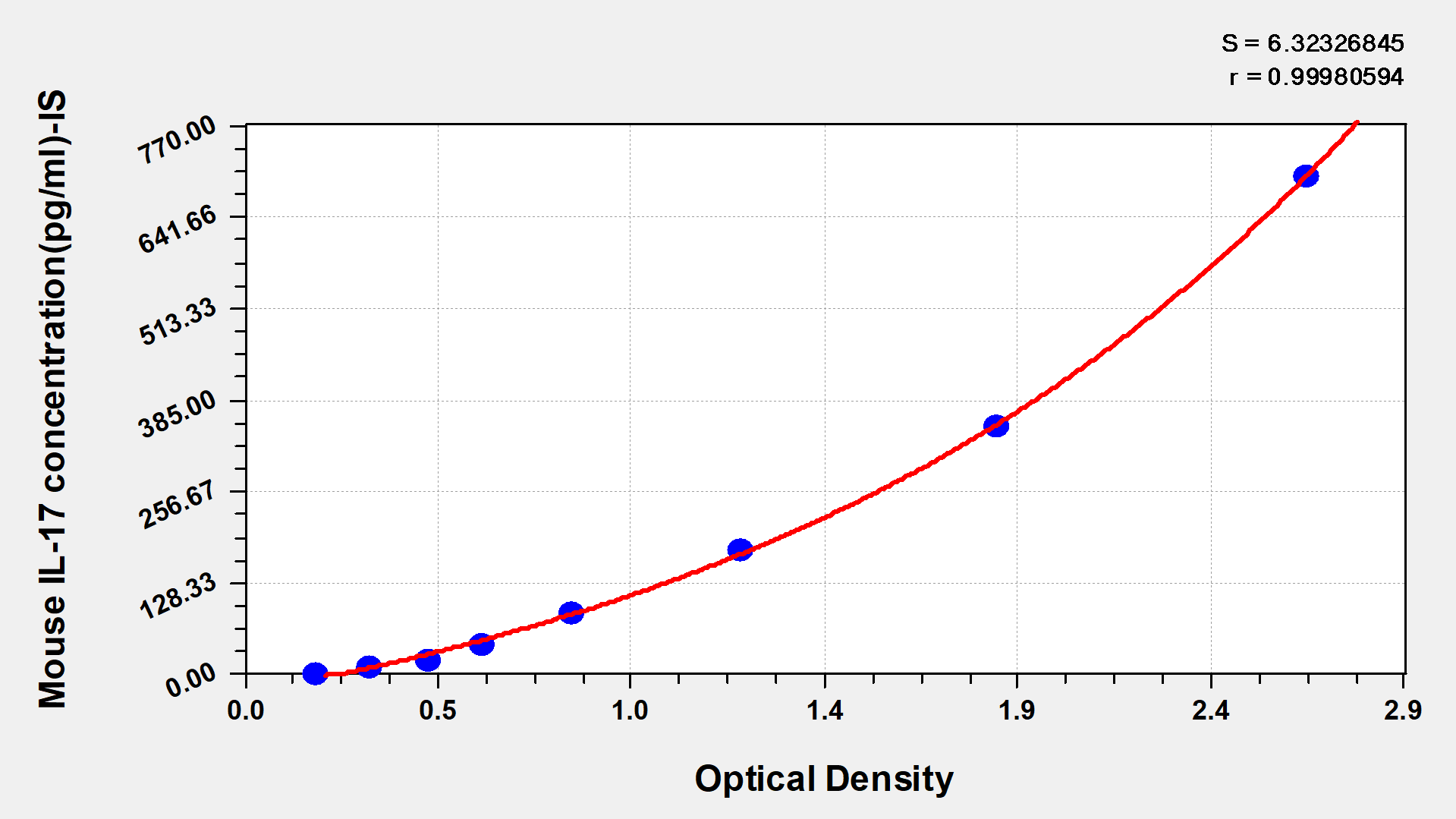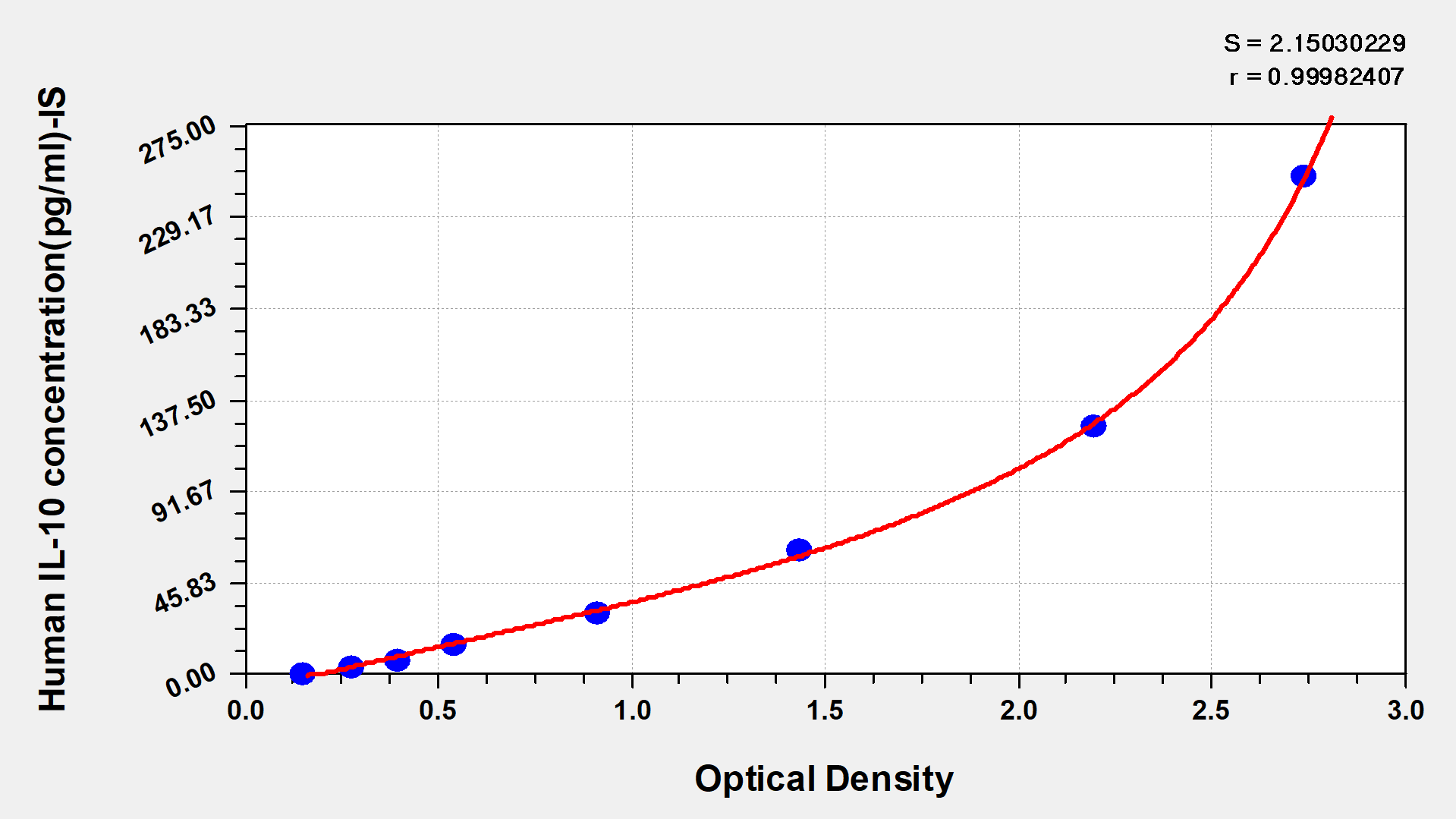Human plasminogen activator inhibitor 1,PAI-1 ELISA Kit
-
中文名稱:人纖溶酶原激活物抑制因子1(PAI-1)酶聯(lián)免疫試劑盒
-
貨號:CSB-E07946h
-
規(guī)格:96T/48T
-
價格:¥3600/¥2500
-
其他:
產(chǎn)品詳情
-
產(chǎn)品描述:人纖溶酶原激活物抑制因子1(PAI-1)酶聯(lián)免疫試劑盒(CSB-E07946h)為雙抗夾心法ELISA試劑盒,定量檢測血清、血漿、組織勻漿樣本中的SERPINE1含量。SERPINE1又稱PAI-1,是絲氨酸蛋白酶抑制劑超家族成員。它與多種生理病理過程密切相關(guān),如凝血纖溶、細(xì)胞遷移等。研究機(jī)制上,主要通過抑制纖溶酶原激活物來調(diào)控纖溶系統(tǒng),還參與腫瘤轉(zhuǎn)移、纖維化疾病等的發(fā)生發(fā)展機(jī)制。試劑盒檢測范圍為3.125 ng/mL-200 ng/mL,靈敏度為2.201 ng/mL。適用于基礎(chǔ)醫(yī)學(xué)研究中相關(guān)疾病模型的分子機(jī)制探索、藥物干預(yù)效果評估或生物標(biāo)志物分析;可為心血管疾病、纖維化病理研究及腫瘤微環(huán)境分析提供可靠數(shù)據(jù)支持本品僅用于科研,不用于臨床診斷,產(chǎn)品具體參數(shù)及操作步驟詳見產(chǎn)品說明書。
-
別名:Clade E ELISA Kit; Endothelial plasminogen activator inhibitor ELISA Kit; Nexin ELISA Kit; Nexin plasminogen activator inhibitor type 1 ELISA Kit; PAI 1 ELISA Kit; PAI ELISA Kit; PAI-1 ELISA Kit; PAI1_HUMAN ELISA Kit; PLANH1 ELISA Kit; Plasminogen activator inhibitor 1 ELISA Kit; Plasminogen activator inhibitor type 1 ELISA Kit; Serine (or cysteine) proteinase inhibitor ELISA Kit; Serine (or cysteine) proteinase inhibitor clade E (nexin plasminogen activator inhibitor type 1) member 1 ELISA Kit; Serine proteinase inhibitor clade E member 1 ELISA Kit; serpin ELISA Kit; Serpin E1 ELISA Kit; Serpin peptidase inhibitor clade E (nexin plasminogen activator inhibitor type 1) member 1 ELISA Kit; Serpin peptidase inhibitor clade E ELISA Kit; Serpine 1 ELISA Kit; SERPINE1 ELISA Kit
-
縮寫:
-
Uniprot No.:
-
種屬:Homo sapiens (Human)
-
樣本類型:serum, plasma, tissue homogenates
-
檢測范圍:3.125 ng/mL-200 ng/mL
-
靈敏度:2.201 ng/mL
-
反應(yīng)時間:1-5h
-
樣本體積:50-100ul
-
檢測波長:450 nm
-
研究領(lǐng)域:Cell Biology
-
測定原理:quantitative
-
測定方法:Sandwich
-
精密度:
Intra-assay Precision (Precision within an assay): CV%<8%
Three samples of known concentration were tested twenty times on one plate to assess.
Inter-assay Precision (Precision between assays):CV%<10%
Three samples of known concentration were tested in twenty assays to assess.

-
線性度:
To assess the linearity of the assay, samples were spiked with high concentrations of human PAI-1 in various matrices and diluted with the Sample Diluent to produce samples with values within the dynamic range of the assay.

-
標(biāo)準(zhǔn)曲線:
These standard curves are provided for demonstration only. A standard curve should be generated for each set of samples assayed.


-
數(shù)據(jù)處理:
-
貨期:3-5 working days
引用文獻(xiàn)
- Sorcin can trigger pancreatic cancer-associated new-onset diabetes through the secretion of inflammatory cytokines such as serpin E1 and CCL5 J Gong, X Li, Z Feng, J Lou, K Pu, Y Sun, S Hu,Experimental & Molecular Medicine,2024
- Metformin Effects on Plasminogen Activator Inhibitor-1 in Polycystic Ovarian Women MT Tawfeq,South Asian Res J Pharm Sci,2023
- Clinical impact of the PAI-1 4G/5G polymorphism in Chinese patients with venous thromboembolism Z Wang,Thrombosis journal,2022
- Plasma ghrelin and von Willebrand Factor levels in patients with non-traumatic osteonecrosis of the femoral head Li C.et al,Hip Int.,2015
相關(guān)產(chǎn)品
靶點(diǎn)詳情
-
最新研究進(jìn)展:SERPINE1,又稱為PAI-1,是一種與血液凝固和纖溶有關(guān)的蛋白質(zhì)。最新研究表明,PAI-1可能與肥胖、代謝綜合征、心血管疾病等疾病的發(fā)生和發(fā)展有關(guān)。同時,PAI-1還被認(rèn)為是一種潛在的治療靶點(diǎn)。
-
功能:Serine protease inhibitor. Inhibits TMPRSS7. Is a primary inhibitor of tissue-type plasminogen activator (PLAT) and urokinase-type plasminogen activator (PLAU). As PLAT inhibitor, it is required for fibrinolysis down-regulation and is responsible for the controlled degradation of blood clots. As PLAU inhibitor, it is involved in the regulation of cell adhesion and spreading. Acts as a regulator of cell migration, independently of its role as protease inhibitor. It is required for stimulation of keratinocyte migration during cutaneous injury repair. It is involved in cellular and replicative senescence. Plays a role in alveolar type 2 cells senescence in the lung. Is involved in the regulation of cementogenic differentiation of periodontal ligament stem cells, and regulates odontoblast differentiation and dentin formation during odontogenesis.
-
基因功能參考文獻(xiàn):
- results of study have not shown that individual genetic variation in PAI-1 is an independent variable that predispose same of children for renal scarring after first febrile urinary tract infection PMID: 29736094
- upregulation of PAI-1 may be a critical mechanism underlying insufficient neurotrophic support and increased neurodegeneration associated with AD. Thus, targeting BDNF maturation through pharmacological inhibition of PAI-1 might become a potential treatment for AD. PMID: 28132883
- CCL5, from endothelial cells, acts in a paracrine fashion on triple-negative breast cancer (TNBC) cells to enhance their migration, invasion, and metastasis. CCL5, in turn, accelerates TNBC cell secretion of PAI-1 and promotes TNBC cell metastasis, thus forming a positive feedback loop. Moreover, this enhanced metastatic ability is reversible and dependent on CCL5 signaling via the chemokine receptor, CCR5. PMID: 28899878
- The present study shows that mean serum TSH and PAI-1 levels were higher in MetS cases as compared to healthy controls and even higher in MetS cases with SCH as compared to MetS cases without SCH. Thus, it can be summarized that in MetS with the presence of thyroid dysfunction, adipocytes behave abnormally and secrete various adipokines such as PAI-1 which in future may lead to thrombotic complication PMID: 29261514
- Protease nexin-1 prevents growth of human B cell lymphoma via inhibition of sonic hedgehog signaling. PMID: 29483508
- PAI-1 gene polymorphisms have roles in atherosclerotic diseases [review] PMID: 29908999
- Decreased fibrinolytic activity increased, whereas PAI-1 4G/5G polymorphism did not influence venous thrombosis risk in this study. PMID: 28777103
- The G-4G-C/A-5G-G PAI-1 haplogenotype may be a genetic marker of susceptibility for obesity and hypertriglyceridemia in Mexican children PMID: 29938477
- The analysis of genotype coexistence revealed a higher incidence of the combination of the ACE II and the PAI-1 4G/4G genotypes in the control group (10.0 vs.5.9% in control group; p = 0.17). CONCLUSIONS: The obtained results suggest no apparent association between the ACE I/D, PAI-1 4G/5G polymorphisms and increased RM susceptibility in the analyzed Polish population. PMID: 27321098
- Serum PAI-1 level at the time of traumatic brain injury may serve as a predictive biomarker of late pituitary dysfunction in mild traumatic brain injury patients. PMID: 28931364
- The personalization of the patients' treatment using uPA/PAI-1 tumor levels allows the reversion of the well-known poor prognostic impact of high uPA/PAI-1 levels and strongly supports the use of this biomarker in clinical practice. PMID: 28685212
- Data show that plasminogen activator inhibitor-1 (PAI-1) and chemokine CCL5 (CCL5) overexpression promoted cell proliferation and migration in breast cancer cells. PMID: 29601121
- Multiple sclerosis patients were categorized as not cognitively impaired (NCI) and cognitively impaired (CI). The NCI group had a higher percentage of heterozygous subjects but no statistical differences were found between the CI and NCI group. Neuropsychological functioning did not correlate with plasma levels of PAI-1 or its genetic polymorphism. PAI-1 plasma levels were related to neurological impairment. PMID: 29111023
- Results demonstrated that EMT could promote the secretion of PAI-1 in the triple negative breast cancer (TNBC) cells. TNBC-secreted PAI-1 could increase cell growth, migration and invasion, and the expression of EMT markers in the TNBC cell lines and xenograft mice model. Most importantly, PAI-1 expression is significantly elevated in the breast cancer tissues and associated with prognosis of patients with TNBC. PMID: 29802992
- Plasma PAI-1 levels may be determined by the degree of obesity and triglyceride metabolic disorders. These factors correlate with a decreased LDL-particle size, increasing the risk of atherosclerosis. PMID: 28692480
- In this meta-analysis, it was determined that PAI-1 polymorphism confers a genetic contribution to the development of recurrent spontaneous abortion. PMID: 28395596
- The A allele and AA genotype of rs6092 in SERPINE 1 may protect against T2 diabetes, and have a protective effect on waist circumference, but a negative effect on Triglycerides in men, while may contribute to a lower HbA1c level in women. PMID: 29627522
- Adjuvant chemotherapy was 9% less likely to be recommended by a multidisciplinary board when using the current criteria compared with using a combination of the St. Gallen criteria and Ki67 and uPA/PAI-1 status (P = 0.03). Taken together, our data show discordance among markers in identifying the risk of recurrence, even though each marker may prove to be independently valid. PMID: 28954632
- Study shows that hyperglycaemia-induced repression of miR-30c increases PAI-1 expression and thrombus formation in type 2 diabetic mellitus. PMID: 27819307
- human plasma protects against endothelial cell apoptosis through sustained BAD phosphorylation, which is achieved by, at least in part, a novel interaction between PP1 with PAI1. PMID: 28296156
- Statistically significant association was not found between 4G/4G genotype and CVT risk. PAI-1 4G/4G is a strong risk factor for venous thrombosis in Indian patients and should be included in laboratory testing panel of thrombophil. PMID: 28561456
- PAI-1 -675 4G/5G polymorphism was not associated with type 2 diabetes mellitus risk in this population. PMID: 28838342
- the association of a gain-of-function polymorphism in the PAI-1 promoter region, rs2227631, with lung function is modified by asthma status. The polymorphism is associated with decreased FEV1/FVC ratio and increased prevalence of airway obstruction in Latino and African American subjects with asthma, but it has no effect in healthy controls. PMID: 28543872
- Plasminogen activator inhibitor-1 has a role in determining leukocyte telomere length in American Indians PMID: 28378522
- we have identified a detailed molecular mechanism in which p53 acts in partnership with Smad to selectively enhance PAI-1 transcription. PMID: 27759037
- PAI-1 is implicated in the pathophysiology of depression. PMID: 27456456
- Plasminogen activator inhibitor 1 (PAI-1) is associated with the risk of Alzheimer's disease (AD) in Tunisian patients. PMID: 28466654
- PAI-1 levels are increased in patients with recurrent pregnancy losses (RPL), preeclampsia, intrauterine growth restriction (IUGR), gestational diabetes mellitus (GDM) in the previous pregnancy, endometriosis and polycystic ovary syndrome (PCOS). In general, an increased expression of PAI-1 in the blood is associated with an increased risk for infertility and a worse pregnancy outcome. PMID: 28758928
- PAI-1/tPA ratio may be an important parameter to monitor the progression of OSMF, and normalizing this ratio to 1:1 may reinstate the normal healing pattern in OSMF cases PMID: 27212010
- uPA, uPAR, and PAI-1 expression was up-regulated in the epidermis of psoriatic skin and in tumor cells in basal cell carcinomas. PMID: 28429105
- evidence for the significant association of PAI-1 4G/5G polymorphism with an increased risk of adult but not pediatric ischemic stroke (Meta-Analysis) PMID: 26742513
- Review/Meta-analysis: indicates a causal effect of elevated PAI-1 level on coronary heart disease risk, which may be mediated by glucose dysfunction. PMID: 28550093
- Case Report: mutation in a highly conserved glycine residue in strand 5B of plasminogen activator inhibitor 1 causes polymerization and PAI-1 deficiency. PMID: 28229167
- PAI-1 and TGF-beta1 promote non-small cell lung cancer tumor cells and tumor-associated macrophages and might be valuable targets for cancer immunosuppression. PMID: 29253845
- This study suggests that PAI-1 is an independent predictor of impaired insulin sensitivity among chronic HIV-infected individuals. PMID: 28322572
- Our study suggested that SERPINE1 may be a promising therapeutic target for chemoresistance. PMID: 28975405
- PAI-1 mRNA expression is significantly increased in cutaneous lesions of patients with livedoid vasculopathy lesions. PMID: 28186689
- We show that the tumor-suppressive actions of MEPs are mediated by PAI-1, uPA and its receptor, uPAR, and are sustained even in the presence of the CAFs, which themselves enhance DCIS tumorigenesis via IL-6 signaling. PMID: 28506312
- The concentration of tPA/PAI-1 complex is an independent predictor of mortality from all causes and from cardiovascular causes in patients with heart failure and preserved ejection fraction. PMID: 27975104
- tPA:Ag and PAI-1:Ag concentration analysis in diabetic foot syndrome depending on age, gender and BMI did not show any significant differences PMID: 28193577
- The homozygous variant 4G/4G also was found to be associated with the higher PAI-1 levels (0.005). The variant allele 4G of PAI-1 4G/5G polymorphism and higher plasma PAI-1 levels were found to be significantly associated with IS in young Asian Indians. PMID: 28460568
- uPA/uPAR and SERPINE1 have roles in in head and neck cancer tumor resistance, metastasis, prognosis and therapy [review] PMID: 27385000
- High PAI-1 expression is associated radioresistance and aggressiveness of non-small cell lung cancer. PMID: 27004408
- The PAI-1 4G/5G genotype was not a relevant predictor of persistent residual venous occlusion after idiopathic deep vein thrombosis, which however was associated with age. PMID: 28347810
- data suggest that even an isocaloric exchange of macronutrients - for example, a switch to a fat-rich diet - affects PAI-1 concentrations in humans and that this is highly heritable. PMID: 28633683
- The current study revealed a significant increase level of TAFI and PAI-1, coupled with a decrease in PAI-2 in women with severe preeclampsia in comparison with the control group. PMID: 27598010
- The abundance of free PAI-1 and TAFI in the plaque may inhibit plasmin generation and thereby counteract plaque destabilization by fibrinolysis, cell migration and inflammation PMID: 28135035
- Genotype PAI 4G/4G is significantly more common in patients with allergic rhinitis (28.1% vs. 16.1%; P = 0.017) compared to the genotype 5G/5G. The results suggest that the carriers of at least one 4G allele are at a higher risk for developing symptoms of allergic rhinitis in asthma. PMID: 28258374
- Genetic polymorphism in the promoter region of the PAI-1 gene was associated with early onset coronary artery disease. PMID: 27805237
- MetS prevalence in the Ghanaian population studied was comparable to that of the industrialized West. PAI-1 may serve as a key link between MetS, as currently defined, and the endpoints with which it is associated. PMID: 27697752
顯示更多
收起更多
-
相關(guān)疾病:Plasminogen activator inhibitor-1 deficiency (PAI-1D)
-
亞細(xì)胞定位:Secreted.
-
蛋白家族:Serpin family
-
組織特異性:Expressed in endothelial cells. Found in plasma, platelets, and hepatoma and fibrosarcoma cells.
-
數(shù)據(jù)庫鏈接:
Most popular with customers
-
Human Transforming Growth factor β1,TGF-β1 ELISA kit
Detect Range: 23.5 pg/ml-1500 pg/ml
Sensitivity: 5.8 pg/ml
-
-
-
Mouse Tumor necrosis factor α,TNF-α ELISA Kit
Detect Range: 7.8 pg/ml-500 pg/ml
Sensitivity: 1.95 pg/ml
-
-
-
-



